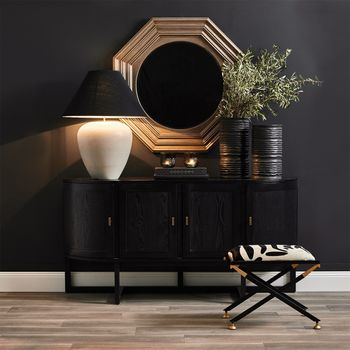
TIMBER AND VENEER CARE GUIDE
When you buy an item of hand-crafted natural or painted timber furniture, you will want to ensure that you take good care of it.
Solid timber and timber veneer finishes are hard and durable, but not indestructible.
Caring for your timber furniture does not require a huge amount of effort.
Sticking to a few simple rules and spending a bit of time looking after your beautiful timber furniture item
will ensure that it stays in perfect condition for many years to come.
a note on timber veneer
While many of our products are solid timber, where appropriate we also design with timber veneer.
Timber veneer is a decorative building material comprising thin slices of natural timber glued onto wooden board.
It has been favoured by builders and designers for decades as the finest and most efficient use of valuable timbers.
to maintain the quality of your CAFE LIGHTING & LIVING timber furniture,
we ask you to follow these simple product care steps:
• Wipe with a clean, slightly damp, soft cloth weekly to remove surface dust.
• Wipe over gently with a soft dry cloth in the direction of the grain (not in a circular motion) and ensure there is no remaining moisture.
• Always protect timber from hot surfaces with a quality cork-backed coaster, trivet or placemat.
• Always protect timber from cold or wet surfaces (like cups or glasses) with a quality coaster or placemat.
• Wipe up spills immediately with a soft damp cloth using a blotting motion (do not rub).
• Always protect timber from damage by ensuring items placed on top (like lamps and ornaments) have a felt backing.
• Occasionally rearrange accessories placed on timber as keeping them in the same place may cause marking over time.
• Do not place anything wet or moist directly on your timber furniture as it will discolour.
• Do not place anything hot directly on your timber furniture as it will mark.
• Do not expose timber to direct sunlight or extremes of humidity.
• Do not conceal tops of your timber furniture directly with glass as it may cause sweating of the timber surface resulting in staining or peeling. If applying glass, use felt pads.
• Do not use general household cleaning products that contain silicones – if you choose to polish your furniture with a product other than water, you should always test first on a small unseen area.
• Do not let liquids that contain alcohol, such as nail polish, etc. come into contact with timber, as stains cannot be removed.
• Do not hit painted furniture with a vacuum cleaner or other heavy items as this may chip the finish.
• Timber is a natural material and therefore will display natural variations in grain and colour.
As natural timber ages, it will change colour- largely dependent on its exposure to light.
This is called ‘mellowing’ and is not considered a defect.
• Timber will react to changes in temperature, especially humidity, causing it to expand and contract.
These movements may result in small cracks (particularly along the joins) and are
|natural changes that are not considered faults and do not affect the quality and durability of your furniture.
• Exposure to continuous direct sunlight should be avoided.
Extended exposure can create hairline cracks in the finish and can affect the colour by either fading or darkening.
• Timber, or wood, is a natural material that is vulnerable to scratches, chips and other damage, therefore extra care should be taken during handling.
Download your timber and veneer product care guide here
| More to explore |
||
 |
 |
 |
| DINING TABLES | STOOLS | BUFFETS AND CABINETS |



